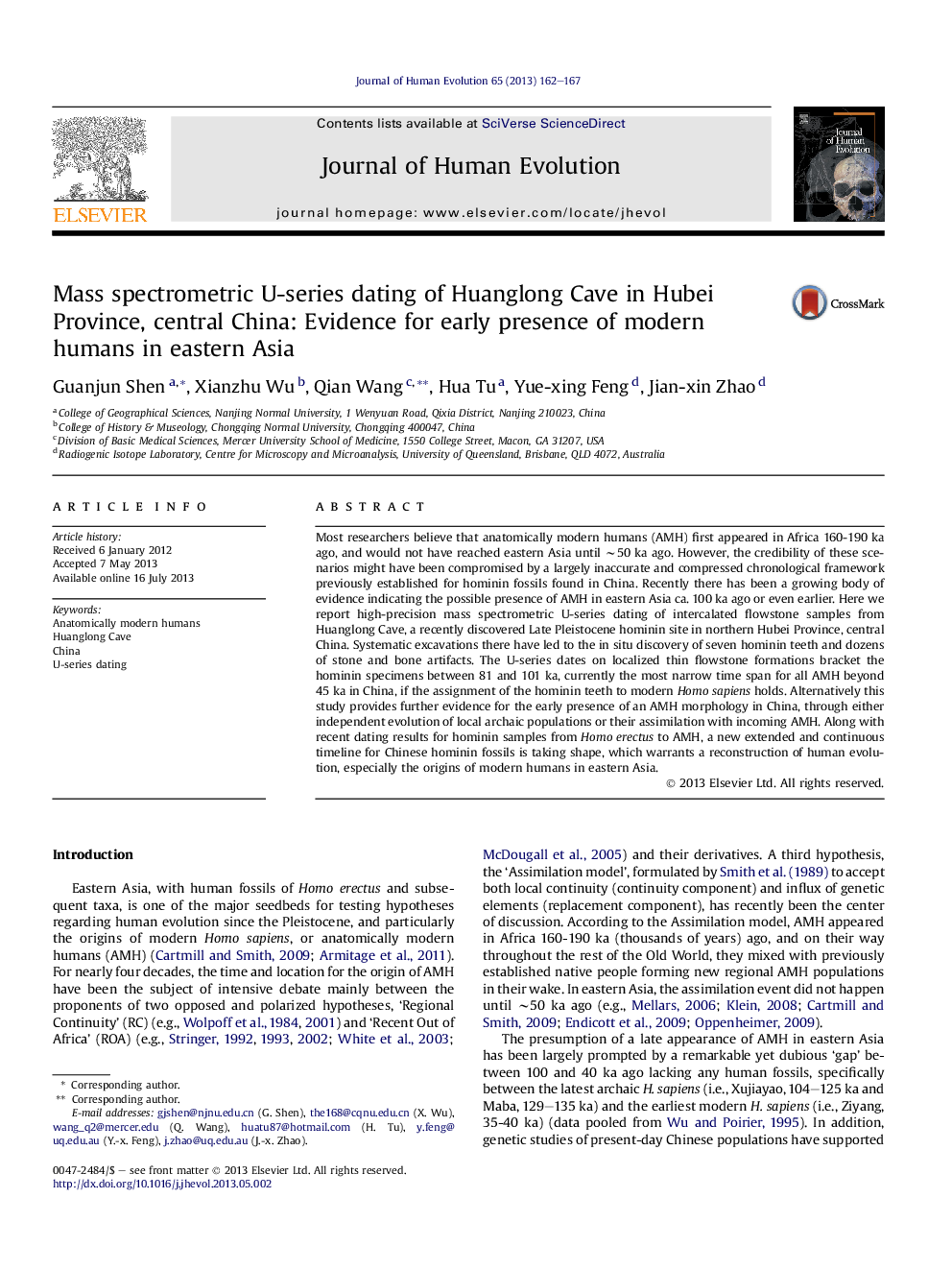| Article ID | Journal | Published Year | Pages | File Type |
|---|---|---|---|---|
| 4556162 | Journal of Human Evolution | 2013 | 6 Pages |
Most researchers believe that anatomically modern humans (AMH) first appeared in Africa 160-190 ka ago, and would not have reached eastern Asia until ∼50 ka ago. However, the credibility of these scenarios might have been compromised by a largely inaccurate and compressed chronological framework previously established for hominin fossils found in China. Recently there has been a growing body of evidence indicating the possible presence of AMH in eastern Asia ca. 100 ka ago or even earlier. Here we report high-precision mass spectrometric U-series dating of intercalated flowstone samples from Huanglong Cave, a recently discovered Late Pleistocene hominin site in northern Hubei Province, central China. Systematic excavations there have led to the in situ discovery of seven hominin teeth and dozens of stone and bone artifacts. The U-series dates on localized thin flowstone formations bracket the hominin specimens between 81 and 101 ka, currently the most narrow time span for all AMH beyond 45 ka in China, if the assignment of the hominin teeth to modern Homo sapiens holds. Alternatively this study provides further evidence for the early presence of an AMH morphology in China, through either independent evolution of local archaic populations or their assimilation with incoming AMH. Along with recent dating results for hominin samples from Homo erectus to AMH, a new extended and continuous timeline for Chinese hominin fossils is taking shape, which warrants a reconstruction of human evolution, especially the origins of modern humans in eastern Asia.
